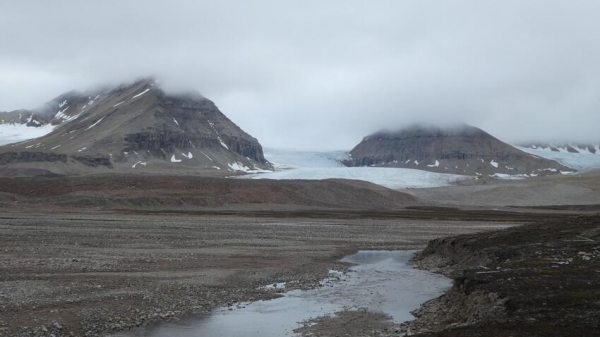Researchers from Nagoya University and the National Institute of Polar Research in Japan have found that dust from land without snow cover in the Arctic is a major source of particles that form ice crystals in low-level clouds of the Arctic (at altitudes below about 3 km) during summer and fall.
The formation of ice crystals in low-level clouds is considered to affect climate because it can cause ice particles to grow at the expense of liquid droplets and then fall as precipitation, resulting in a lower sunlight reflectance and a shorter lifetime for clouds.
“The Arctic is said to be heating up two to four times faster than the rate of global warming,” said Dr. Kei Kawai of Nagoya University, the first author of the study. “Considering that the distribution and the lifetime of low-level clouds affect climate, our finding might help improve predictions of Arctic climate change.” The researchers published their findings in Geophysical Research Letters.
Dust is made up of very small mineral particles of earth or sand. It acts as a nucleus for the formation of ice crystals in clouds. Although mainly emitted from arid regions in low or mid latitudes, recent studies have shown that dust is also emitted from areas where there is no snow, ice, or vegetation in the Arctic. A previous study suggested that such Arctic dust serves as an efficient nucleus for forming ice crystals because it contains a tiny amount of organic matter that has high ice nucleating ability.
Read more at Nagoya University
Image: Svalbard in the Arctic in summer. Dust from the land without snow cover greatly contributes to the formation of ice crystals in the low-level clouds. (Photo credit: Yutaka Tobo, National Institute of Polar Research)


